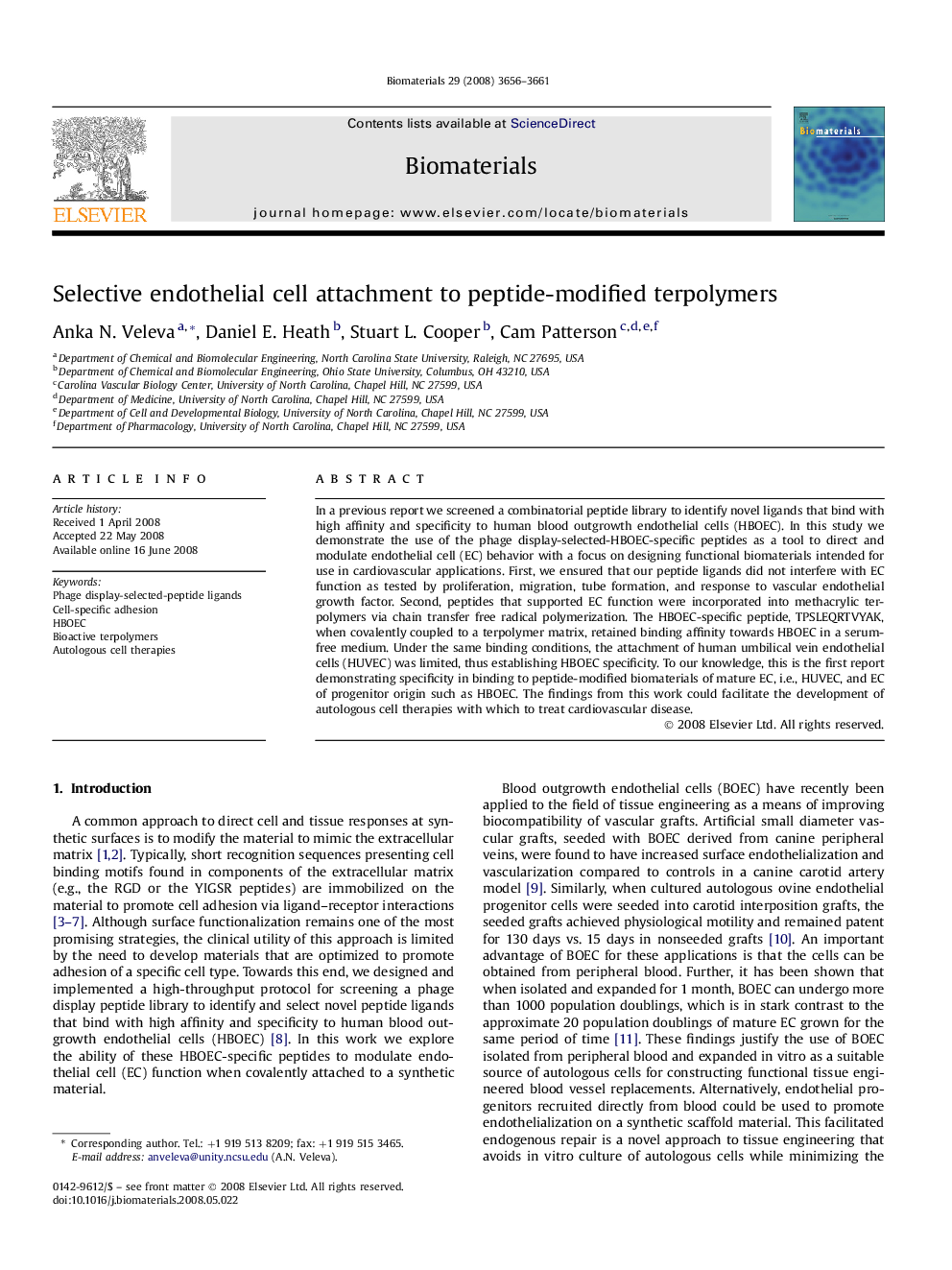| Article ID | Journal | Published Year | Pages | File Type |
|---|---|---|---|---|
| 9539 | Biomaterials | 2008 | 6 Pages |
In a previous report we screened a combinatorial peptide library to identify novel ligands that bind with high affinity and specificity to human blood outgrowth endothelial cells (HBOEC). In this study we demonstrate the use of the phage display-selected-HBOEC-specific peptides as a tool to direct and modulate endothelial cell (EC) behavior with a focus on designing functional biomaterials intended for use in cardiovascular applications. First, we ensured that our peptide ligands did not interfere with EC function as tested by proliferation, migration, tube formation, and response to vascular endothelial growth factor. Second, peptides that supported EC function were incorporated into methacrylic terpolymers via chain transfer free radical polymerization. The HBOEC-specific peptide, TPSLEQRTVYAK, when covalently coupled to a terpolymer matrix, retained binding affinity towards HBOEC in a serum-free medium. Under the same binding conditions, the attachment of human umbilical vein endothelial cells (HUVEC) was limited, thus establishing HBOEC specificity. To our knowledge, this is the first report demonstrating specificity in binding to peptide-modified biomaterials of mature EC, i.e., HUVEC, and EC of progenitor origin such as HBOEC. The findings from this work could facilitate the development of autologous cell therapies with which to treat cardiovascular disease.
